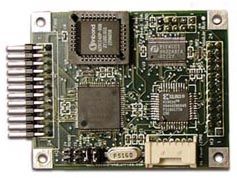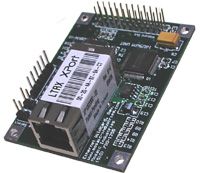Mosaic embedded designs » Embedded applications » Serial tunneling
Serial tunneling opens or accepts a TCP/IP connection
to send and receive binary or ASCII data
What's a serial tunneling?
"Serial tunneling" is a name for an exchange of serial data between two computers, typically using the TCP/IP protocol. In network terminology, a "tunnel" is a path that passes data without the sender and receiver having to know or care about the details of the transfer mechanism. "Serial tunneling" was originally coined as a term to describe a method for allowing instruments and computers that were designed to communicate via RS-232 or RS-485 to now communicate via TCP/IP. Its meaning has broadened to encompass a variety of serial data exchanges between instruments via Ethernet or WiFi.
Use Mosaic Wildcards for serial-to-ethernet communications
The EtherSmart and WiFi Wildcards can implement serial tunneling by initiating or accepting TCP/IP Ethernet connections and exchanging binary and/or ASCII text data with other devices on the local network.
A comprehensive suite of pre-coded driver functions is available to simplify the implementation of serial tunneling in your application program. Buffer management, data transmission and reception, connection control, and inter-task service management functions have been preprogrammed for you so that you could focus on your application. Creating a serial tunnel over the Internet allows you to have a virtual, infinitely long "RS232/RS485 cable" to send and receive binary or ASCII data.
Learn more about our EtherSmart/WiFi Wildcards and serial tunneling in the EtherSmart/WiFi Wildcard Users' Guide.
Home | Site Map | Products | Resources | Order | About Us
Copyright © 2011 Mosaic Industries, Inc.
Your source for single board computers, embedded controllers, and operator interfaces for instruments and automation
Serial Tunneling | Embedded Web Server | RS232 RS485 | Serial to Ethernet






